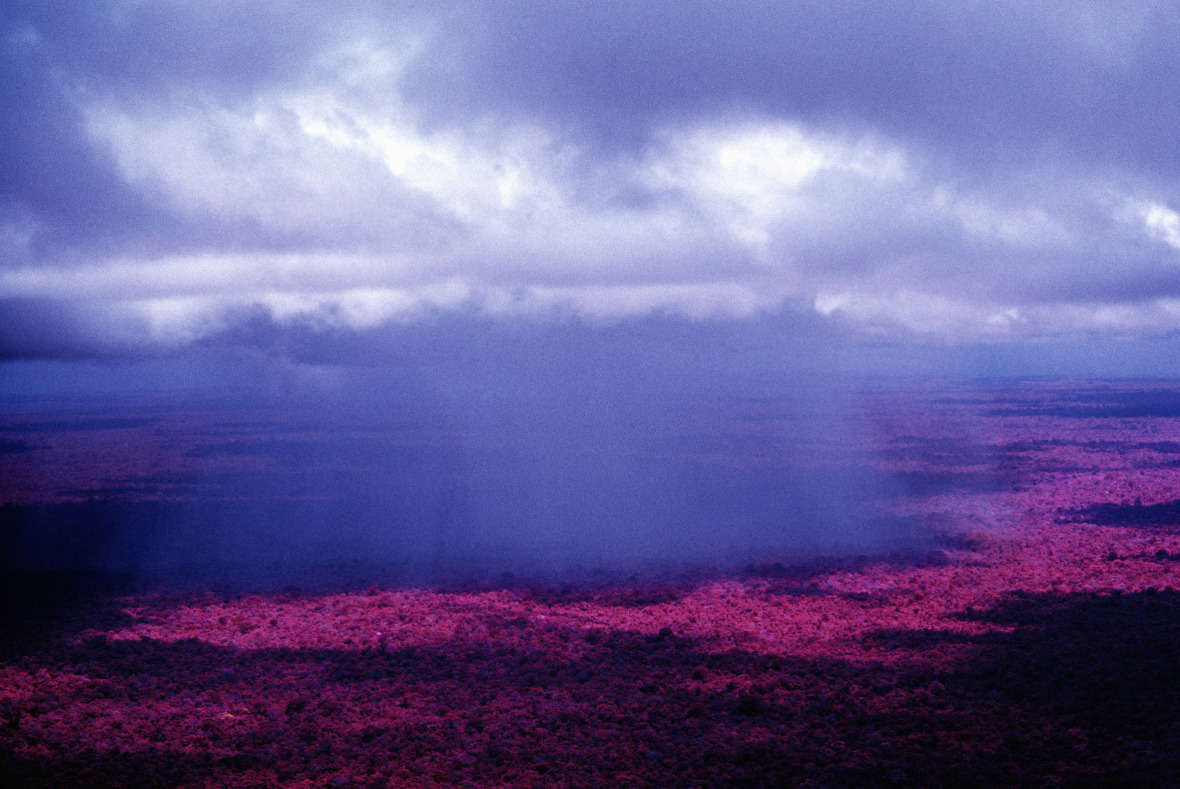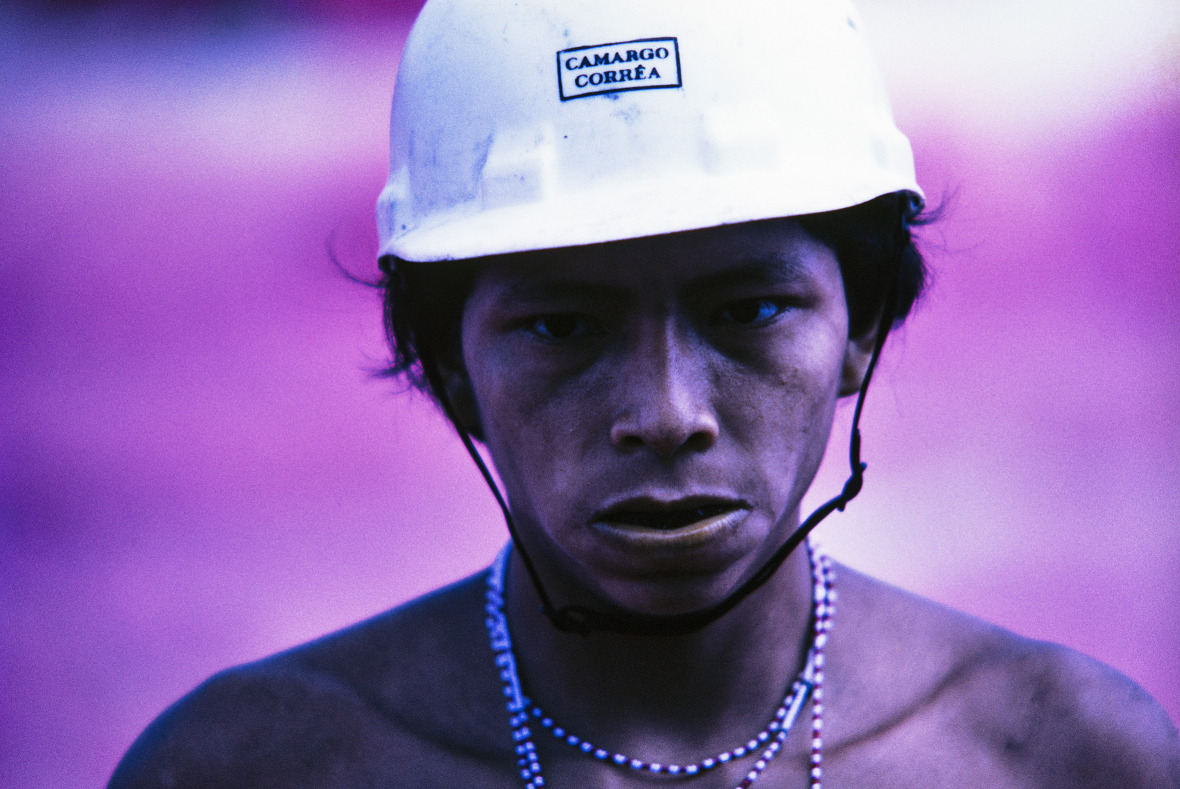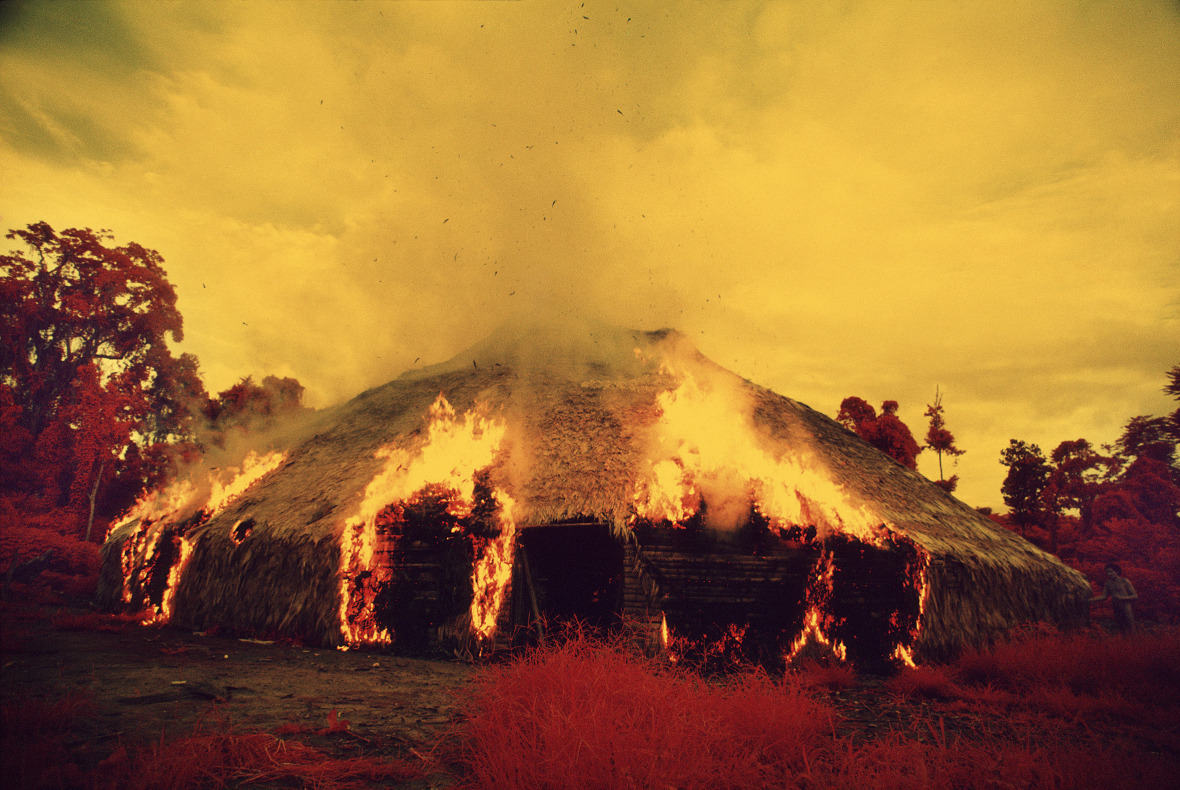Can the climate change agenda ‘save’ the Amazon?
07.12.2020

Images are courtesy of Claudia Andujar and Vermelho Gallery. For more information about Claudia Andujar’s work write to info [at] galeriavermelho [dot] com [dot] br.
1. Introduction
As one of his first actions as president-elect, Joe Biden announced that the US will rejoin the Paris Agreement on climate change. Earlier, Biden had already warned that the Brazilian government would be named and shamed as a climate outlaw if it didn’t stop deforestation in the Amazon region. This concern with the Amazon is common in international climate discourse. Indeed, “saving” the Amazon for the sake of the climate has become a rallying cry among climate policymakers and researchers alike.
In this post, I want to argue that while curbing deforestation in the Amazon is undoubtedly important, framing the challenge as a mission to “save” the Amazon in order to fight climate change is problematic. This framing tends to assign a quasi-religious saviour role to international actors and vilifies the people the Amazon needs “saving” from. While right-wing populists and climate denialists like Brazilian President Jair Bolsonaro may lend themselves to such Manichean accounts, this kind of salvation discourse also implies that simply removing right-wing populists from office will “save” the Amazon. Yet this overlooks the fact that most of the Amazon region’s problems – ranging from deforestation to economic exploitation and political violence – precede Bolsonaro and will persist even if he should soon share the fate of the now-demoted Donald Trump.
In addition, a narrow understanding of “saving” as reducing deforestation neglects many of the underlying socio-political conflicts that contribute to environmental degradation in the Amazon in the first place. To adequately grasp the predicament of the Amazon in the Anthropocene, we need a broader understanding of the political history, environmental injustices, and economic exploitation that have been affecting the region and its people at least since the civil-military dictatorship of the 1970s and 1980s.

2. The saviours: The climate change agenda and the Amazon
Since the 1992 United Nations Framework Convention on Climate Change, the climate change agenda has been based on an international legal framework whose central objective is to mitigate global warming. The 2015 Paris Agreement is the current international cornerstone of this regime. Its central mechanism is the Nationally Determined Contributions (NDCs) in which state parties commit to implementing domestic climate policy. This is accompanied by separate climate finance regimes that fund mitigation activities and create financial incentives to reduce emissions, such as the Green Climate Fund and the REDD+ program (Reducing emissions from deforestation and forest degradation).
This international legal framework is accompanied by a specific scientific and political discourse. One recurring element of this discourse is the notion of “saving” the world, or parts of it, from climate change. This salvation rhetoric is used by policymakers and scientists alike. For instance, in a 2019 speech to the UN, French President Emanuel Macron declared that "We must act concretely and rapidly to save the Amazon." More often than not, the underlying structure of salvation discourse is dichotomous and Manichean: a saviour and an external threat are defined, with messianic overtones used to create a moral opposition between good and evil.
The Amazon region plays a starring role in international climate discourses of salvation. Currently, due to deforestation and subsequent agricultural developments, the Amazon region is making a significant contribution to greenhouse gas emissions. The former carbon sink is becoming a carbon source. Politically, “saving” the Amazon has thus taken on a very specific meaning, namely curbing deforestation in order to reduce greenhouse gas emissions and sustain carbon capture. Reducing the deforestation of the Amazon was a key priority in the NDCs that Brazil adopted during the Dilma Rousseff Presidency in 2016. The goal set at the time was to reduce illegal deforestation to zero by 2030.
3. The messiah: Bolsonaro, climate change and the history of the Amazon
The approach to the Amazon in Brazilian politics has changed radically since right-wing populist Jair Bolsonaro rose to power. During his presidential campaign, Bolsonaro – whose second name is Messias – presented himself as the national messiah and relied heavily on evangelical political groups. In line with this religious theme, he adopted his very own salvation discourse, purporting to “save” the Amazon – not from illegal deforestation, but from underdevelopment and foreign interference. Since Bolsonaro took office, he has affirmed his climate skepticism and adopted measures to dismantle institutions for environmental protection, scientific research, and human rights protection. Bolsonaro’s policy for the Amazon is to accelerate the opening of the region to investment and economic activities and limit the land-use rights of indigenous and traditional communities. While Bolsonaro has not announced a formal withdrawal from the Paris Agreement, the reality on the ground is that Brazil’s NDC, and especially the goal of reducing deforestation, has become moot.
Given this rhetoric and politics, Bolsonaro has come to be perceived as a threat to the Amazon. And indeed, Bolsonaro’s right-wing policies pose multiple problems, including the accelerated deforestation of the Amazon. However, painting Bolsonaro as the villain the Amazon needs to be saved from is undercomplex. Removing right-wing populists like Bolsonaro from office will not solve the complex problems the Amazon region is embroiled in, because these problems predate Bolsonaro. While the current focus on contemporary right-wing populist opposition to climate change policies is understandable, this focus must not detract us from a deeper analysis of the multiple actors and historical dynamics that have caused the structural problems of which deforestation is but one manifestation.
In actual fact, Bolsonaro is tapping into a long-standing nationalist and sovereigntist discourse and political practice that construct the Amazon as a crucial site of national integration and identity. This discourse and practice, now revived by Bolsonaro, experienced its last peak during the civil-military dictatorship of the 1970s. That regime institutionalized the problematic developmental model and authoritarian power structures that still dominate the region today. Since then, the Amazon has experienced a permanent military presence in the forest, an intensification of infrastructure megaprojects, protracted conflicts around agribusiness and extractive activities, as well as the discrimination, displacement and murder of indigenous peoples. These political-economic structures have become historically entrenched and proved resistant to, or even compatible with, democratic change.

4. Using the Amazon to save the climate will not save the Amazon
As well as being a problem in their own right, the historically entrenched political-economic structures also inhibit the kind of change envisaged by the climate change agenda, especially efforts to reduce deforestation and carbon emissions. The international salvation discourse does not sufficiently address these underlying, ingrained structures.
For one thing, the agricultural lobby in the Amazon region, a historically entrenched political force, continues to oppose measures to reduce deforestation because their economic and political power depends on the expansion of agriculture and extractive activities in the region. In addition, the idea that the Amazon is a constitutive part of the Brazilian nation is still prevalent among powerful military and conservative circles, who continue to perceive international climate policies in relation to the Amazon as interference in national sovereignty. This political economy and ideology pose formidable obstacles to implementing the Paris Agreement and NDCs on the ground in the Amazon region even after Bolsonaro leaves office. Financial incentives to reduce deforestation from programmes like REDD+ may go some way to changing the economic motivations of local actors in the short term. In the long term, however, they may not be enough to transform the prevailing development model in the Amazon, and they may even have unintended adverse effects such as increasing land concentration. The REDD+ agenda is simply too narrow to overcome modes of violence that are historically present in economic activities in the Amazon.
Ultimately, even if deforestation and emissions are reduced to some extent, this will still not solve the many other problems associated with the established political structures in the region, such as the militarization and the endemic violence that affect vulnerable populations in particular. This violence results from disputes over land, the exploitation of cheap migrant or local labour, the suppression of indigenous communities, the extensive use of the national military for administrative purposes, and the weakness of non-violent democratic processes in the face of the continued political influence of old elites. The continuous securitization of the Amazon through military activities that benefit politically well-connected large landowners remains insufficiently understood by international climate actors. Hence, even if the Amazon is one day “saved” for the purposes of climate change, this will not be a success story for many of the people who live and suffer there.

5. Conclusion
This analysis highlights the need to broaden the political and academic discourse on the Amazon in the context of international climate politics. Brazil has to come to terms with the socio-environmental legacy of the civil-military dictatorship in respect of the political uses and imaginaries of the Amazon. The international climate regime needs to take questions of environmental justice more seriously, recognize the constraints imposed by an economic system based on resource extraction, and face the fact that the current politics of the atmosphere is deeply entangled with the cartography of exclusion regimes like that of the Amazon. Using the Amazon to “save” the planet ultimately reaffirms a utilitarian notion of nature that does not sufficiently distance itself from the instrumental uses of the region by the old colonizers, the authoritarian military, or the messiah president.
Claudia Andujar is a photographer and activist, her work has portrayed the struggle and life of the Yanomami people in the Brazilian Amazon rainforest for more than 50 years. The current pandemic and the spread of Covid-19 by illegal gold miners make Claudia’s images an urgent call showing how a historical development continues to violate the present of forest conservation and its people.
